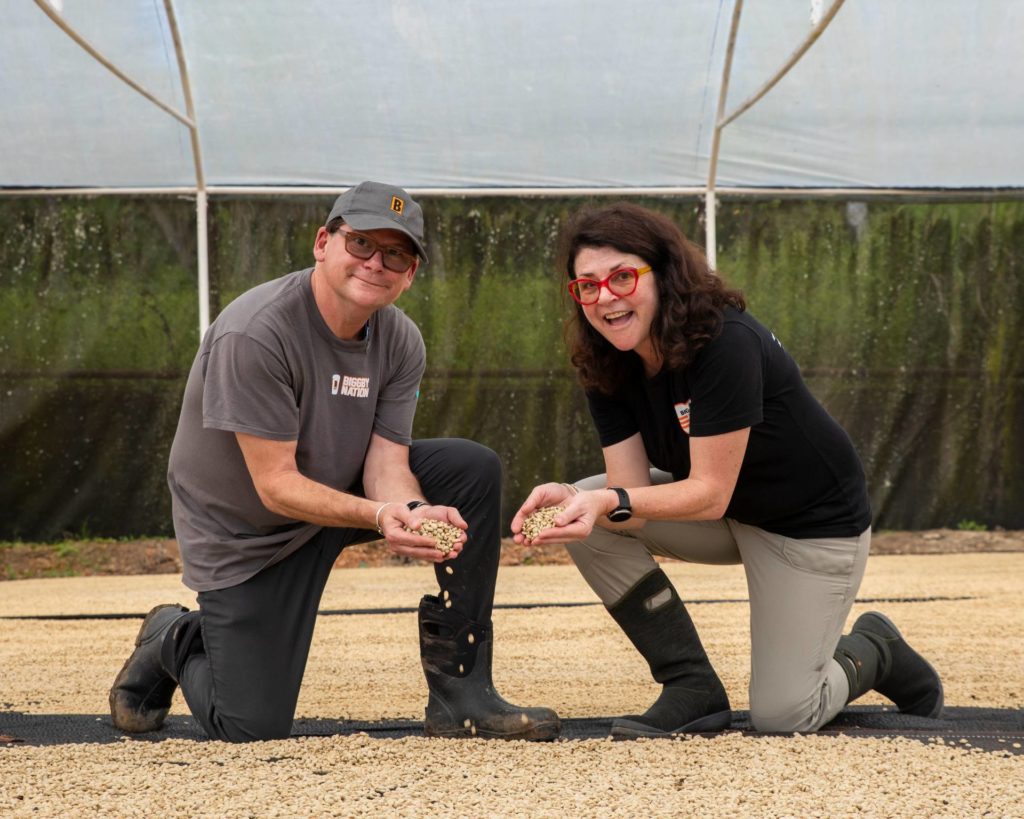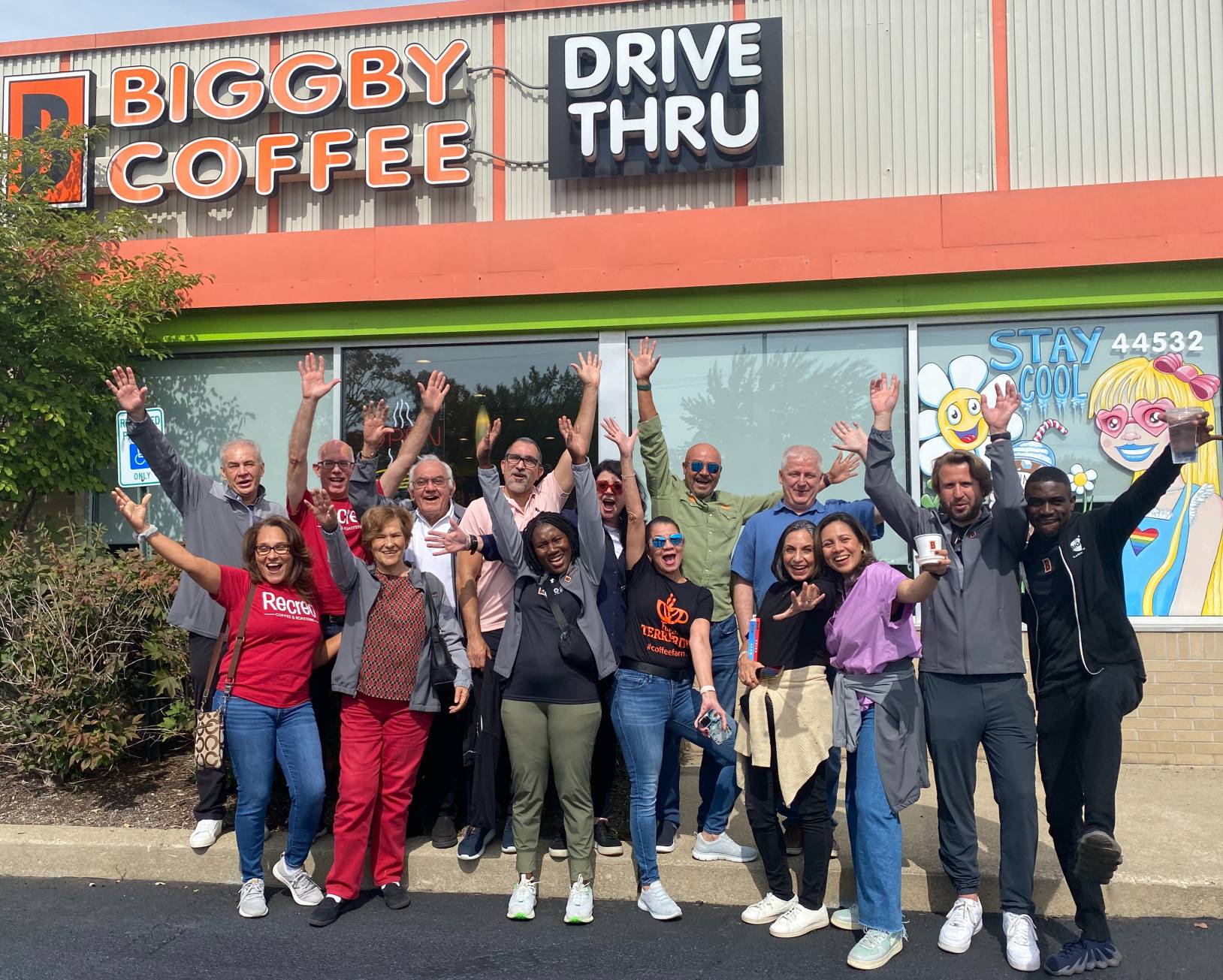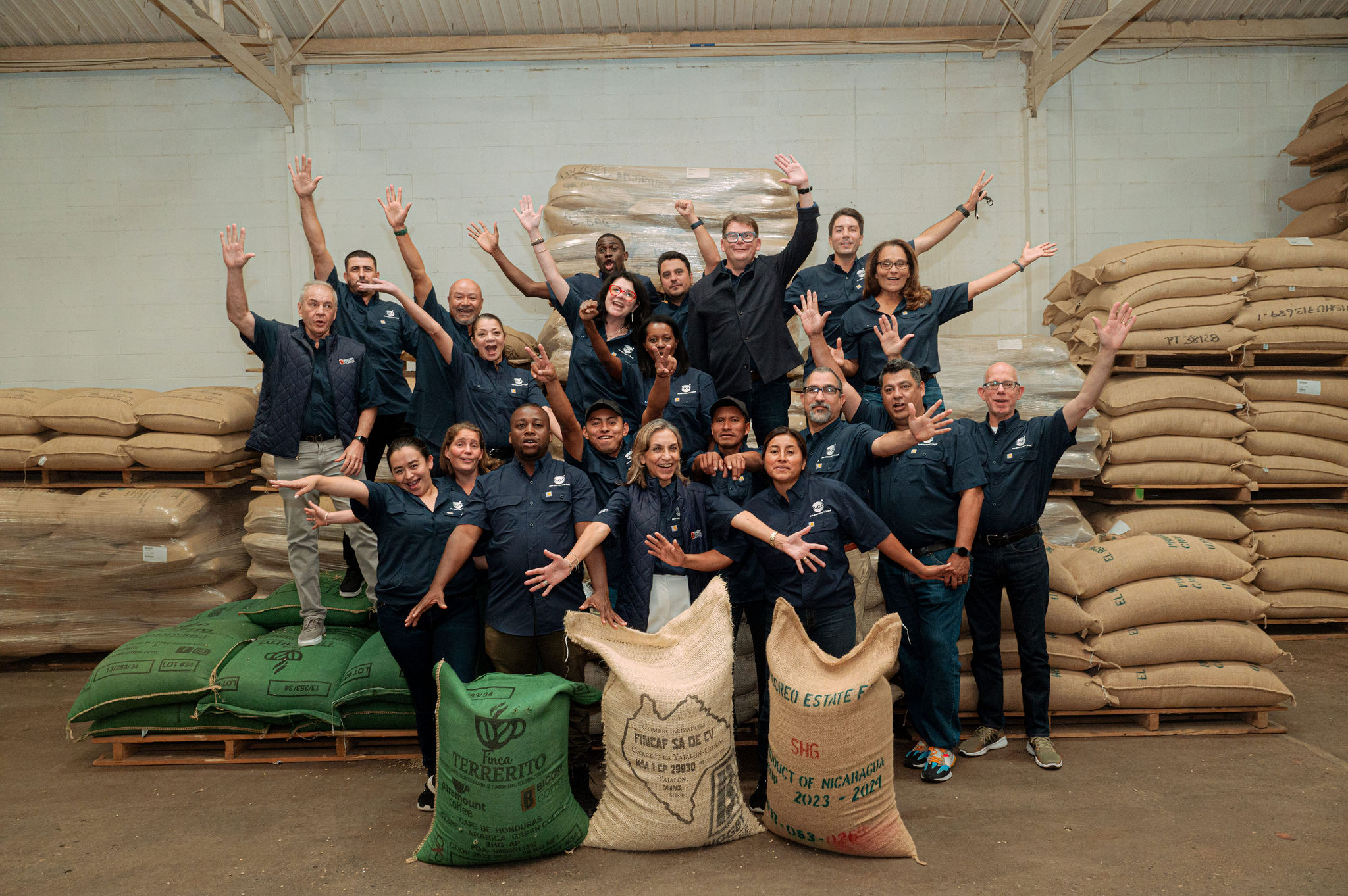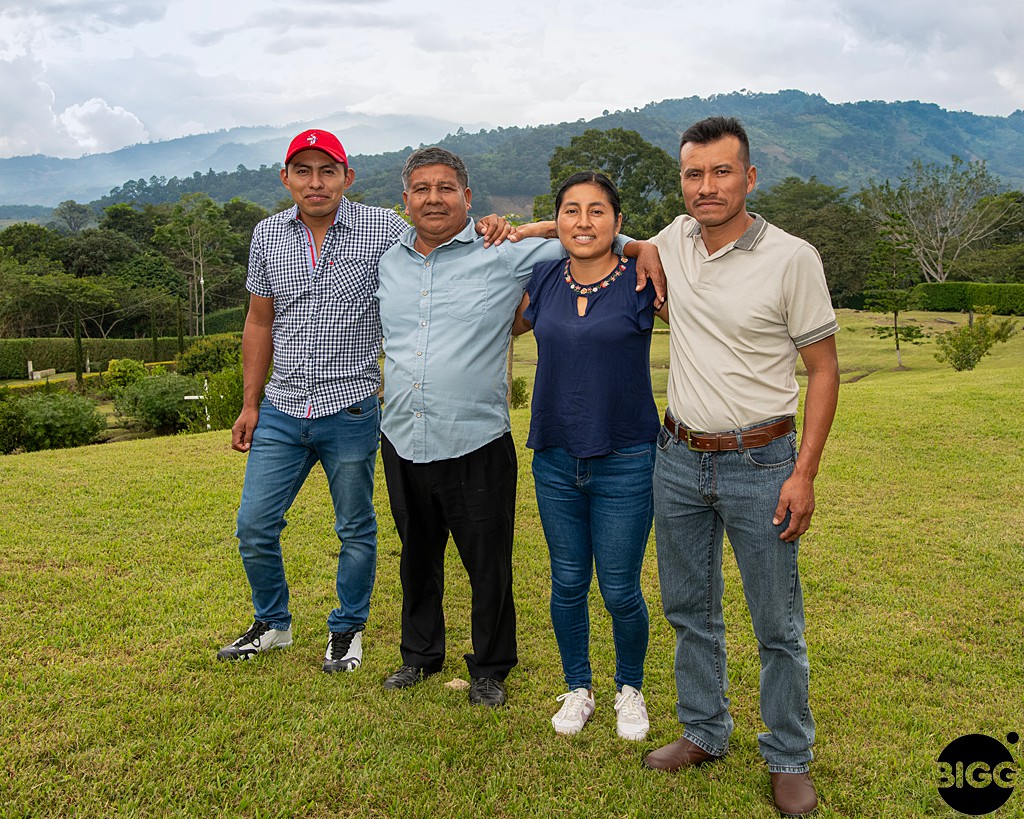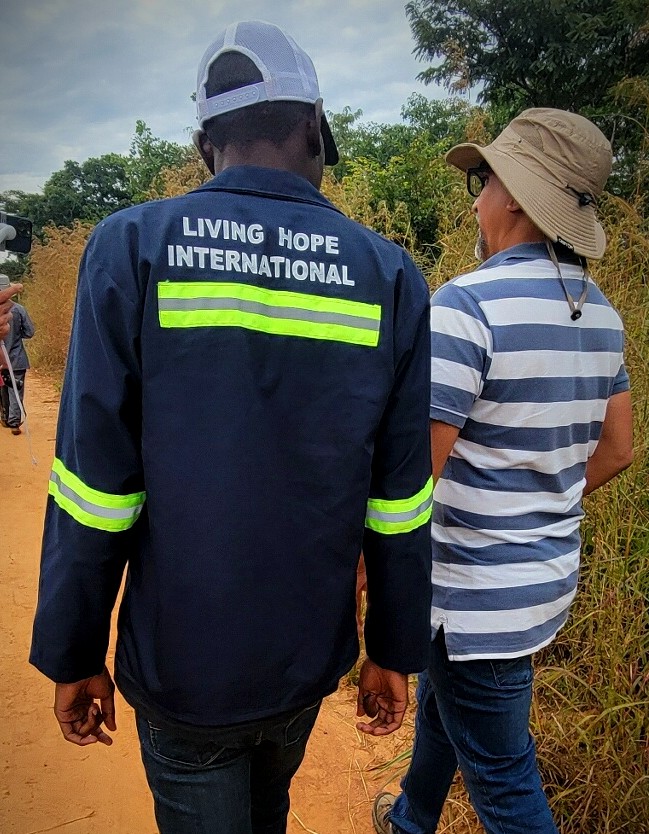I’ll let you in on a secret.
When Bob and I started One Bigg Island in Space in 2018 and took on the mission from BIGGBY COFFEE to be 100% Farm-Direct by 2028, we didn’t know what we were doing. And we certainly didn’t know how we were going to do it. But we got started anyway.
It’s been like flying a rocket ship while you are building it in space.
We’ve learned a lot over the last five years. And we learn more every day from our Farm-Direct partners and prospects, and the people we meet on our travels.
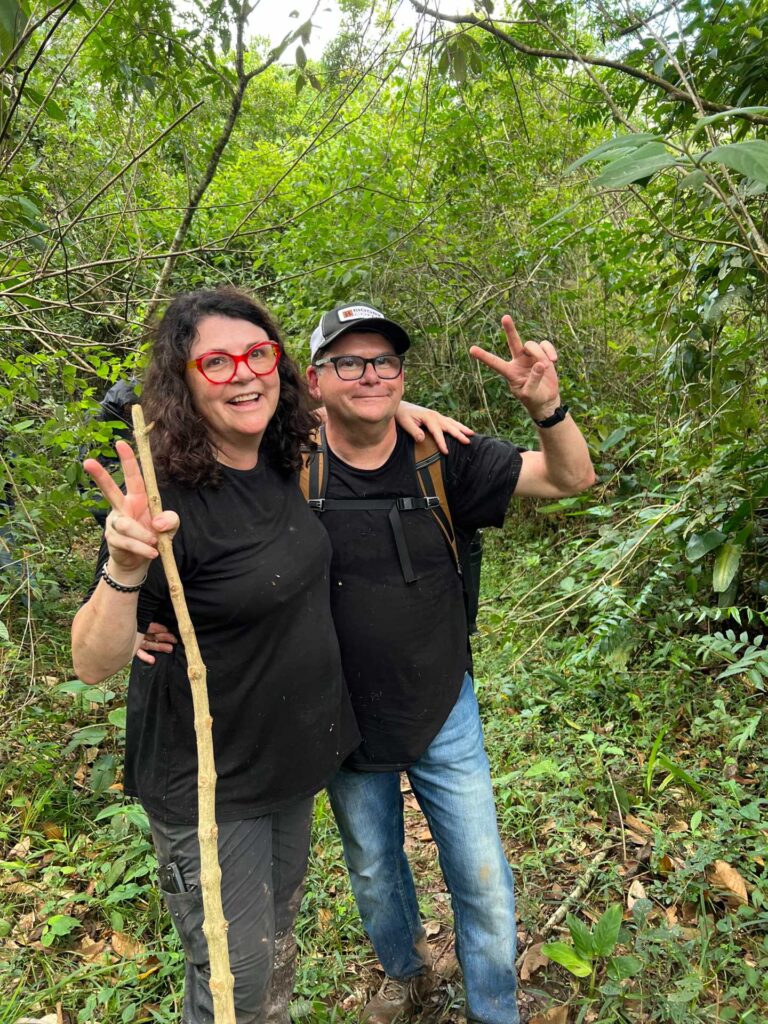
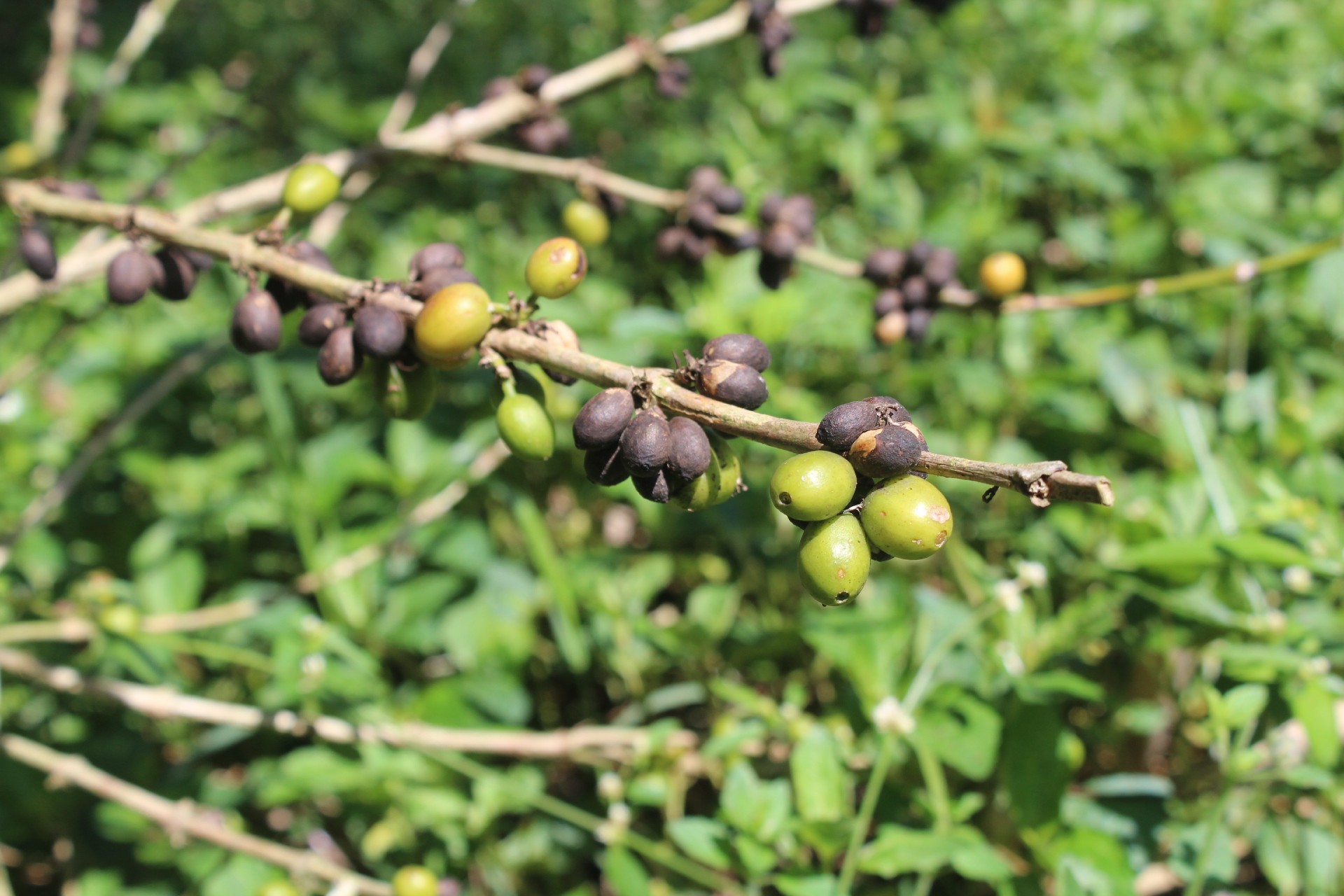
Some of the most important things we’ve learned that underpin our operating philosophy and guide our decision-making sound like marketing slogans: People, Planet, Community; Boots on the Ground; Farmshare; Full Circle; A Name, a Face, and a Place for Every Coffee we Serve.
As we approach the half-way mark of being 50% Farm-Direct by mid-2024, I thought it might be useful to put some flesh on the bones of those “sound bites” and illustrate how these central tenants play out on the ground.
Coffee cherries damaged by weather and pests.
But first, I want to tell you why we’re doing it.
After all, it’s a lot easier, and probably a little cheaper, for a chain of cafés to buy coffee the way almost every other coffee shop in the world does it… by calling a broker or a roaster, and ordering it for the lowest price possible for the quality and quantity that you need. No mess, no muss, no fuss. The coffee magically appears on your doorstep.
No matter how you do it, the way coffee is purchased impacts the world. And I can tell you from first-hand experience that the status quo is having a disastrous affect on the planet and on people.
Coffee is under threat.
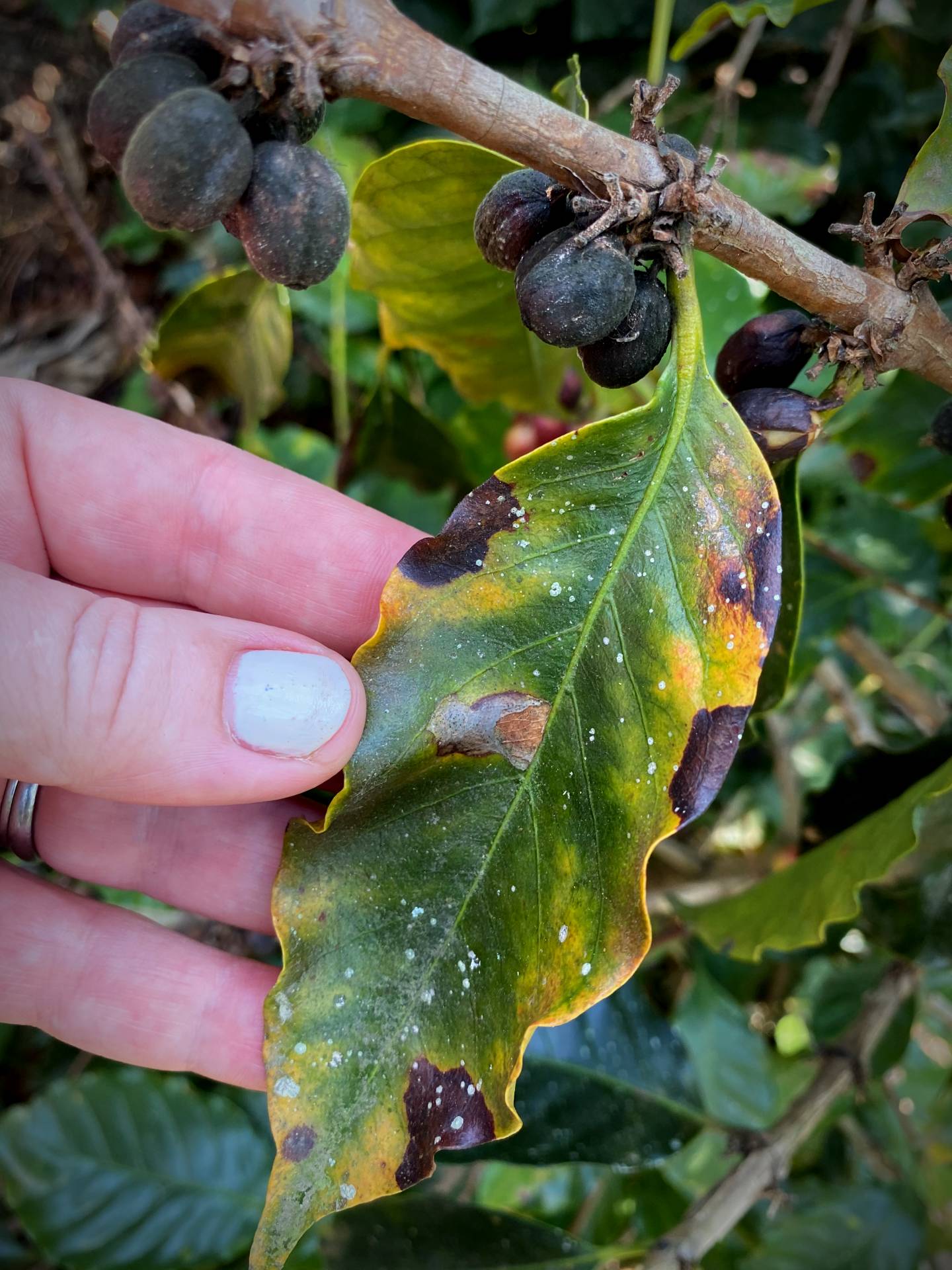
Climate Change
We’ve met hundreds of producers over the last five years in more than a dozen countries on several continents. Not one of them is a climate change denier. They see the impact in their fields: wet places are getting wetter, dry places are getting drier, and the timing of the seasons is changing.
Pests and diseases that used to just be the background noise of farming can wipe out an entire crop in a season. Rust is a great example. It’s a fungus that is common in coffee throughout the world, but particularly in Central and South America. There’s almost always some amount of it in a coffee field. A healthy plant can keep it in check.
But when the rainy season comes early, pours harder, and stays longer, in unseasonably warmer temperatures than ever in the history of your farm, the damp, humid conditions year over year can overwhelm the coffee plant’s ability to stave it off.
Rust on a coffee plant in Chiapas, Mexico.
In 2014, rust wiped out all of the coffee production in Chiapas, Mexico. All of it. And it didn’t just kill the crop. It killed the plant. So, the farmers lost everything.
The same scenario is playing out all over the world, though the details may be different depending on the region. Drought in Kenya is killing coffee. Antestia bugs in East Africa are becoming increasingly problematic. They suck on the juices of the flower, the berry, and the growing tips on the stems, reducing yields by half, and leaving what’s left tasting vaguely of potatoes. The white stem borer also thrives in warmer conditions that are increasingly common in coffee country. It kills a coffee plant by digging into the stems and laying its eggs. And then later, the beetles hatch, and the cycle starts again. The list goes on and on.
About half of the land around the world currently used to produce specialty coffee could be unproductive by 2050, according to a recent report published by the Inter-American Development Bank.
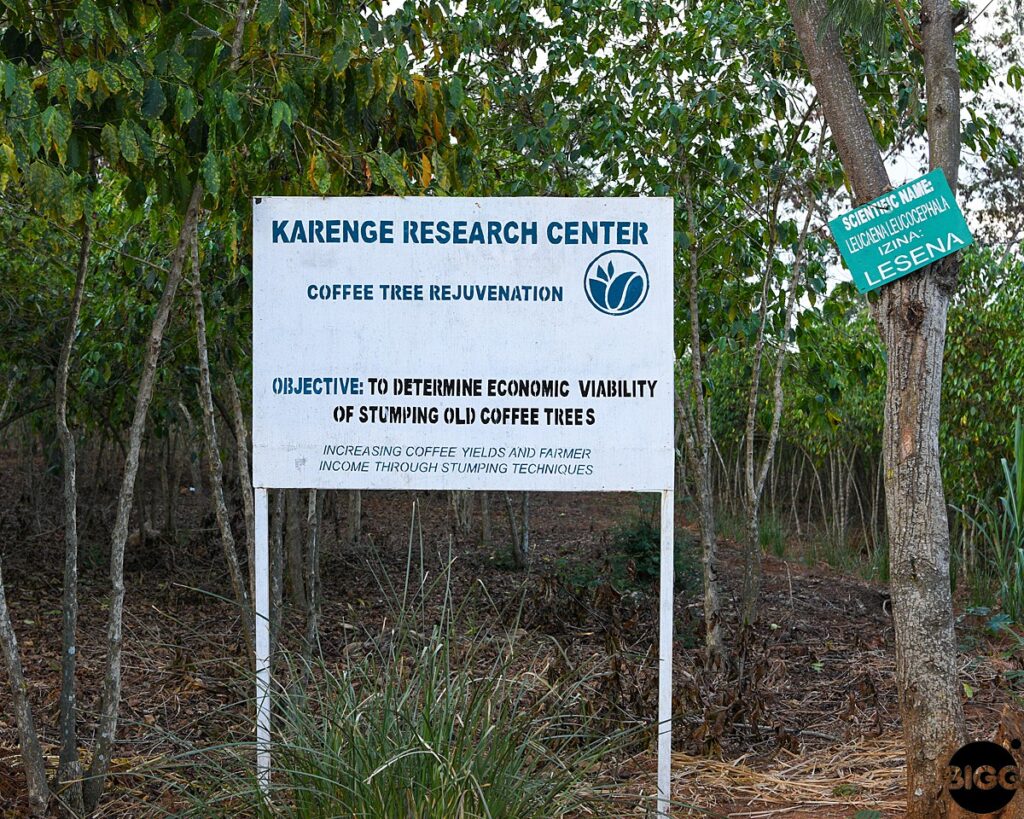
*A coffee research center in Rwanda.
Fortunately, there is lots of promising research happening to help combat the effects of climate change on coffee. And there are lots of things a farmer can do to mitigate its impact in their fields. But consider this: most coffee in the world (about 60%) is grown by producers with less than 12 acres. Many, a lot less than 12 acres. They are often in remote areas, and likely don’t have an education. How do you reach them with the knowledge of this new agronomy? And how can they afford to make the changes to their farming methods?
The C-Contract
The second major threat to coffee is the way it’s bought and sold on international markets.
When a coffee farmer sells his or her cherries from the gates of their farm, it’s their own, very labor-intensive crop. And a producer, to have a shot at a successful crop, must work the farm 365 days a year. Those cherries are the most precious, special things in the world to that farmer.
But the day the coffee leaves the farm, it stops being a special, precious thing, and instead becomes a commodity, like pork bellies or natural gas, indistinguishable from other coffee just like it.
And here’s a dirty little secret: producers never know how much they’re going to get paid for their crop. And there’s a chance, if they try to hold out for a better price, that they won’t be able to sell it at all. Can you imagine the desperation of working 12 hour days for a whole year without knowing how or if you’re going to get paid?
Coffee is a global commodity. And the price it sells for is not set by the farmer. But rather, by the people that run the commodities exchanges, using a complex interplay of factors including supply and demand, geopolitical events, natural disasters, speculative trading, and government policies.
Plus, there are plenty of people between the farmer and the end user that try to horn in on what little money there is to be made. Coyotes, nefarious brokers, and even exporters that use every means possible to pay the farmer as little as they can.

*Coffee loaded up and ready for export at a dry mill in Sebaco, Nicaragua.
All coffee needs the same kinds of things to thrive: the right amount of water, the right amount of shade, pruning, weeding, fertilization, pest management, picking, processing, etc., all done at the exact right time. But how those things happen can vary dramatically in cost depending on where the farm is, how big it is, and at what stage and to whom the farmer sells their coffee beans.
For example, Arabica coffee with a quality rating of say, 82, is treated about the same by the C-Contract, a few minor country differentials notwithstanding, whether it was grown in Nicaragua, Mozambique, or Brazil.
That’s very problematic. Brazil is the world’s largest grower, accounting for more than a third of world-wide coffee production. 70% of coffee farms in Brazil are more than 500 acres, and their processes are mostly mechanized. Their economies of scale drive the price of producing coffee lower, so their profit margins can be better. They can still thrive when coffee prices are low. And if they have a banner crop? The commodity price goes lower still.
But what on earth does that have to do with the economics of a small farm in Nicaragua or Mozambique? The small producer has to do all of the same things they need to do, regardless of what is happening in Brazil. But what’s happening in Brazil may determine how much they can get paid.
And the problem is getting worse, not better. For the last many years, most small farmers all over the world are being paid less for their coffee than it costs them to grow it.
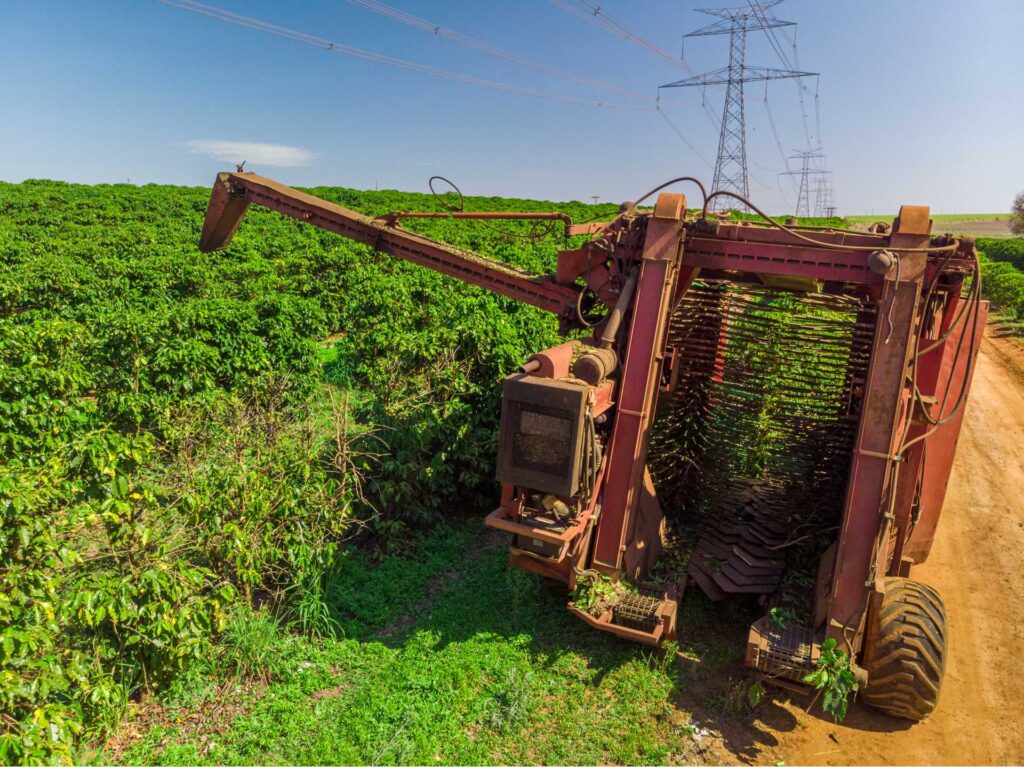
*Machine harvesting of coffee in Brazil.
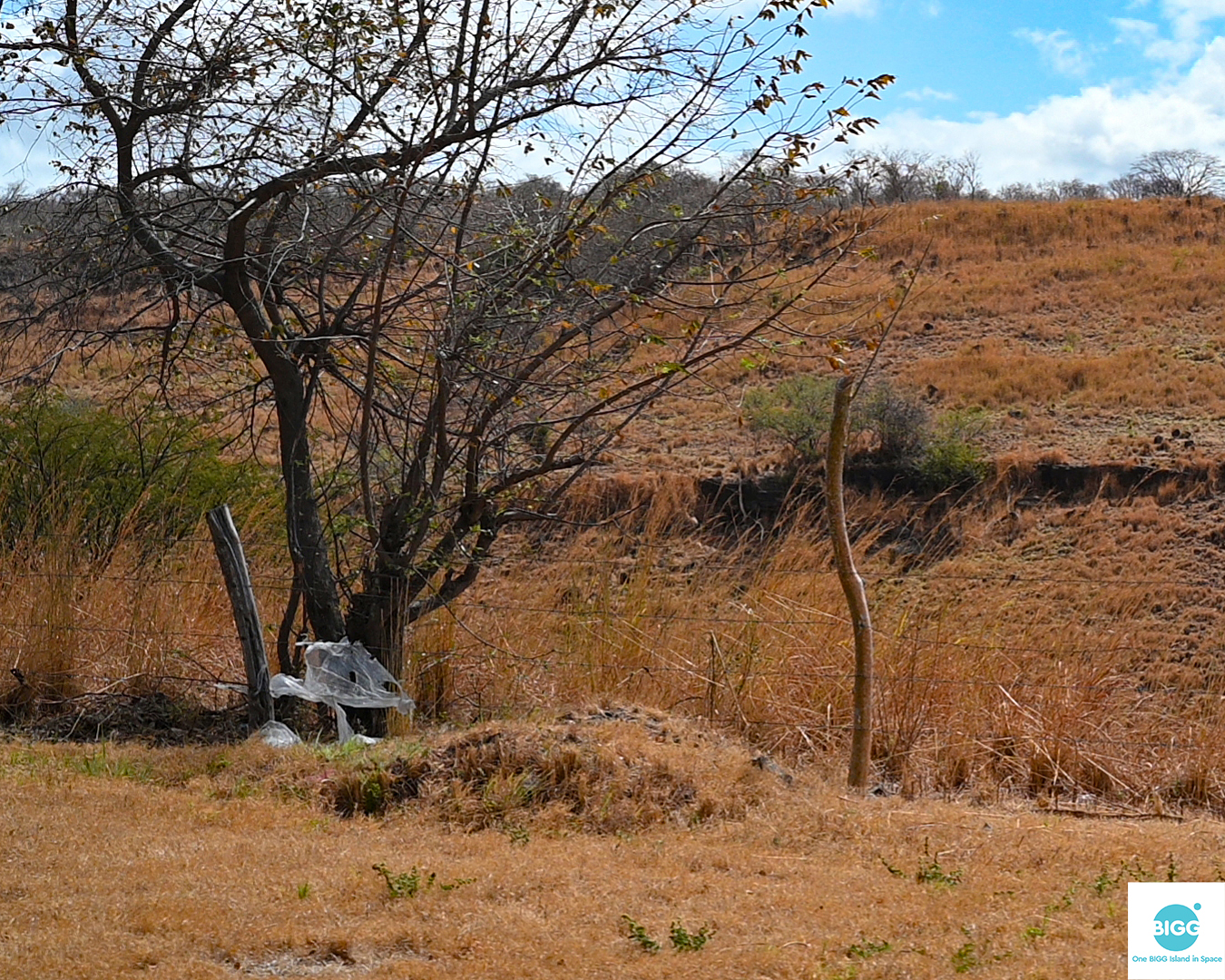
Why that Matters
Larger farms may be able to take short cuts, like paying their workers less, taking advantage of their indigenous populations for a pitifully cheap work force, maybe even using child labor (we’ve seen plenty of it.) Also, using more harmful pesticides and herbicides can help lower labor costs. Both approaches are devastating to people and the planet. But as alarming as those things are, they are the only way for the larger farmers to keep their heads above water.
Smaller producers just don’t have that luxury. Maybe it means that their kids stop going to school in order to spend their time working on the farm instead, creating a generational poverty trap.
Abandoned farm land in Nicaragua.
But maybe even that isn’t enough.
Small farmers all around the world are abandoning their land. We have seen mass migrations everywhere, and especially on our southern border. I’m not saying that every migrant is a coffee farmer or a coffee worker.
But we have seen a lot of abandoned coffee land. And we’ve heard stories from people in coffee country desperate to be able to provide for their families, leaving behind everything they’ve known for a shot at a better life. The same scenario is playing out among other farmed commodities world-wide, like cocoa and bananas.
Coffee Prices
If you’ve been paying attention, then you might have noticed wildly disruptive price swings in the coffee market over the last many years. In the café business, those swings in price are more than just a headache. They can be existential. Price volatility for your primary product that can swing 40-50% up or down in the course of a week is not a sustainable business model.
But here is another thing to consider.
On May 31st, 1976, the average cost of coffee was $1.46 a pound on the international market. Eggs cost about $0.84 a dozen. On October 3, 2023, the average cost of coffee was $1.46 a pound on the international market. Eggs cost around $4.25. According to a study done by the AARP, things that on average cost $1.00 in the 1970s would cost $7.03 today.
We all know that it’s a lot more expensive to live in 2023 than it was fifty years ago. The amount of money that could provide a decent life in 1976, with access to food, shelter, health care, security, and the ability to provide something better for the next generation, just doesn’t go far enough in 2023. Not by a long shot. I mean, the price of eggs increased by 700%. That statistic says it all.
For the smallest, poorest coffee farmers who grow most of the coffee that we all love to drink, their livelihood is trapping them, their families, and their communities in an entrenched cycle of poverty and is leading them to make some desperate choices.
And for us as consumers? It’s not sustainable. Fewer coffee producers farming less and less viable land to grow a crop that more and more people want to drink? The math doesn’t work. Something has to give.
By the way, Bob wrote a terrific piece on this very thing here.
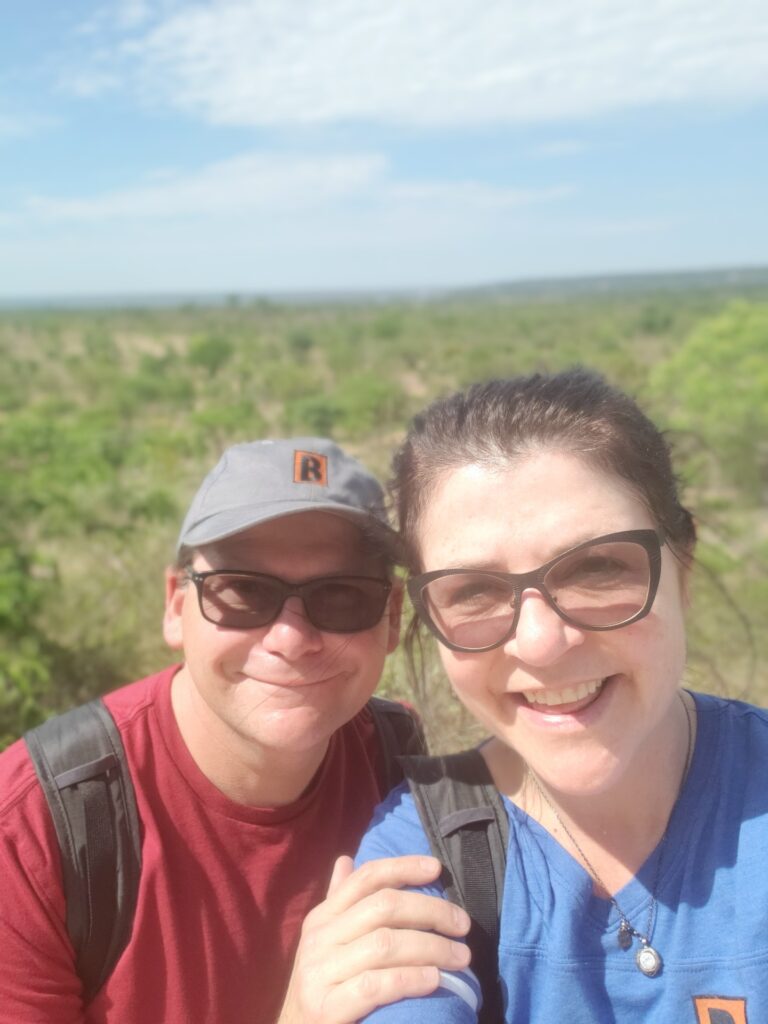
*Bob and I landing in Zambia on our first trip in 2018.
What did we know?
Before we got started with OBIIS in 2018, the short answer to that question, at least in retrospect, is almost nothing. You don’t know what you don’t know.
Bob has been in the café business for almost 30 years, and he certainly understood that coffee price volatility was a threat to BIGGBY COFFEE’s Franchisees’ bottom-line. And he has always read extensively about the coffee industry, so he knew that climate change, and the diseases and pests that it brings, was a real threat.
He was thinking a lot about answers to those questions. But he was mostly focused on running a successful franchise company, which today has 370 units open, with another 140 signed contracts under development. That’s a full-time job right there.
Me, though? I’m just a coffee consumer, just like most BIGGBY COFFEE customers. I never really gave much thought to the provenance of the roasted beans I dutifully ground up every day for my morning cup. I knew coffee was a farmed product, so people in faraway countries were involved. If I had to conjure up the image of a coffee farmer, I’m ashamed to say that Juan Valdez might have come to mind. I’ve read a fair amount about climate change. But mostly, I was a blank slate.
Once we started travelling though, and meeting producers around the world, my eyes opened very quickly. You just can’t un-know what you learn and see and touch and feel out there. Make no mistake, the situation is urgent.
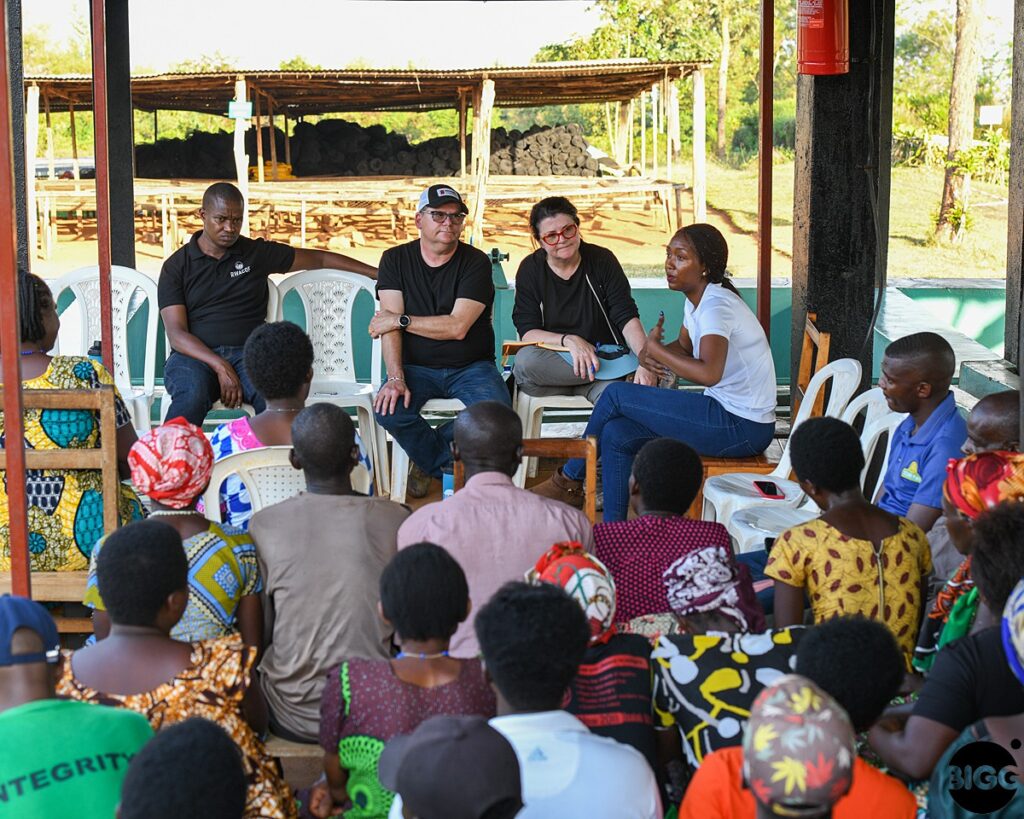
*Meeting with a large Co-Op in Rwanda in June, 2023.

Farm-Direct
But we have a solution. It’s not a magic bullet, and plenty of challenges remain. But we believe we have found a way to create a business model where everybody wins: the coffee producer and the communities they serve, the BIGGBY COFFEE Franchisee and the consumers they serve, and, crucially, the planet we all share.
Through Farm-Direct, we establish life-long relationships with producers doing the right thing for their people, the planet, and their communities. And then we pay them a fair and sustainable price that is based on how much it costs to grow coffee on their farm, rather than the C-Contract.
We get significant savings by eliminating the hands in the chain that don’t belong there, and don’t add any value. Then we push those savings back down to the farmer. That’s what we mean when we say Farm-Direct. We really are dealing directly with the producer, and not anyone else.
It’s more complicated this way.
Not only do we have to find these producers, but we have to figure out the logistics of getting the coffee from their farms all the way to a BIGGBY COFFEE café, rather than relying on a long chain people to do that for us in the background. But we have help. BIGGBY COFFEE’s roasting partner, Paramount Coffee, has been instrumental in helping us to forge these partnerships.
Why life-long relationships? Because it’s not enough to know that you’re going to sell your crop at a fair price for one year. What happens after that? How can you make long-term investments and plan for the future without knowing that your farm can be sustainable going forward? How can you continue to improve your agronomy, protect your environment, fight climate change, invest in your people, and dream about your children’s future if there’s a real chance that next year, you’ll sell your crop for less than it cost you to grow it?
We believe that this is the way forward if coffee, as a crop and as an industry, is going to survive. And not just for BIGGBY COFFEE, but one day, for all of our competitors, too.
It’s how we’re going to guarantee our Franchisees’ supply of coffee at a stable price.
And it’s how we’re going to know, with deep surety, that the way we source our primary product isn’t ruining the environment and destroying people’s lives in the process.
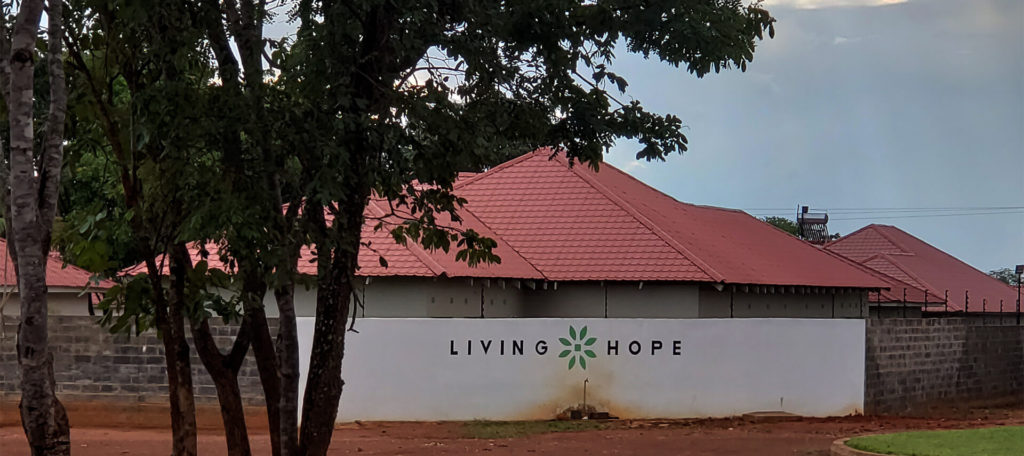
How We Got Started
In 2018, we were invited to N’dola, Zambia in the copper belt region of a former British colony (Rhodesia) to tour an orphanage that had started a coffee farm to make itself more sustainable.
The orphanage had been founded by Trina Davis, a member of the Oak Pointe Church in Novi, Michigan. But they were doing something unique. Rather than an American-led solution to a far away place’s problems, they had established Living Hope to be led by Zambians, for Zambians, with American support. That, in and of itself, was intriguing.
And they were taking a business approach to help address a serious social problem. The coffee farm wasn’t about charity. It was about the power of commerce, done in an ethical way, to create sustainable change.
We went. And we were moved by what we found.
They weren’t growing much coffee… only about 20,000 lbs, or so. In 2018, BIGGBY COFFEE was buying about 1.6 million pounds of coffee a year. So, 20,000 lbs was barely a rounding error for us. But they were having trouble finding a marketplace. Selling coffee one pound at a time in church on Sundays is just not a market solution.
So, we bought their coffee. All of it. And it got us thinking. Witnessing the impact that coffee was having in N’dola, Zambia made us question the impact that all the coffee we were buying was having in the world. We realized that we knew practically nothing about the 1.6 million pounds of coffee we bought every year, other than what we paid for it.
After Bob went back to Michigan and spoke with his business partner Mike McFall and the rest of the BIGGBY COFFEE leadership team, the beginnings of Farm-Direct were born.
They handed OBIIS the mission of transforming the way BIGGBY COFFEE sources its primary product, with the goal of being 100% Farm-Direct by 2028. Bob and Mike announced it to the world at their TedX Talk in 2019.
We Don’t Decide
The first big, important thing we learned from Living Hope is this: we don’t want to be in the business of dictating to people halfway around the world what they should be doing. They know what they need better than we ever could.
By Zambians, for Zambians, with American support.
We want to find producers on the ground that already have the solutions to improve lives for their people and their communities. And we want to find producers that are employing sustainable agricultural practices, as well as protecting their soil, their native habitats, and their water sources.
What we bring to the table is the marketplace. BIGGBY COFFEE sells about 60 million cups of coffee a year. We find producers that are already investing in the future of their communities. They’re changing the world. We’re just buying their coffee in an economically sustainable way.
And by extension, each cup of Farm-Direct coffee that BIGGBY COFFEE Franchisees sell in their stores is changing the world, too.
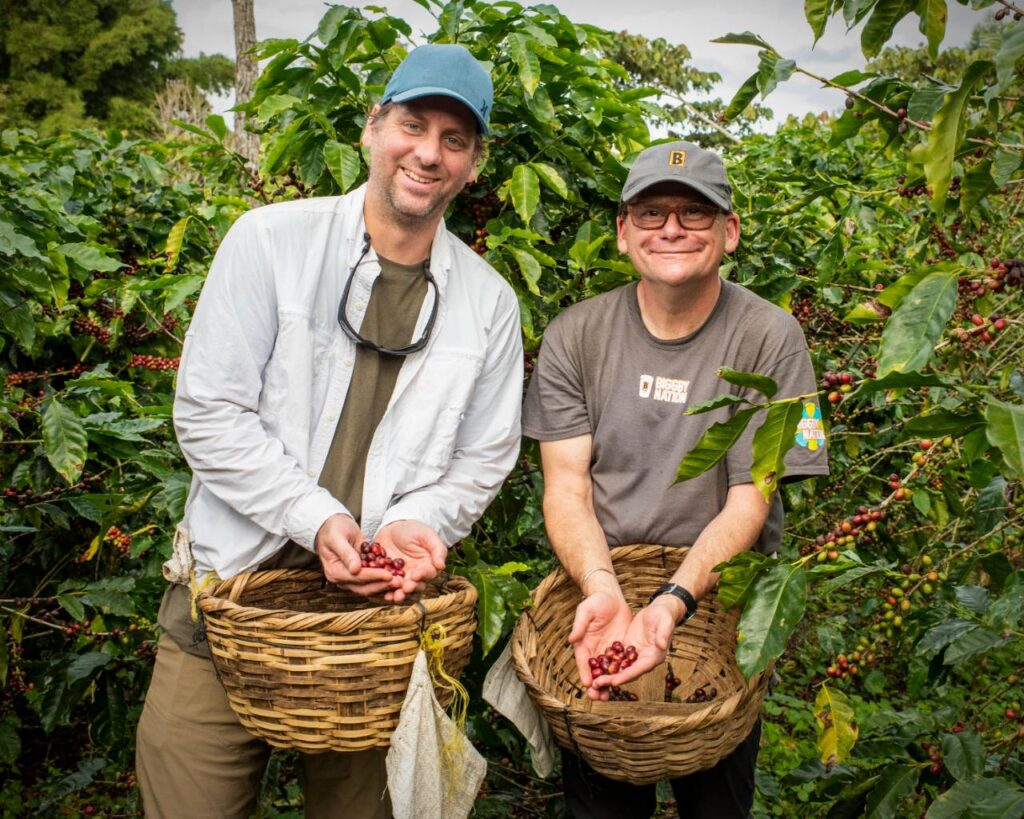
*Rich Schaasfma (left) of Paramount Coffee with Bob on our one of our many farm visits to El Recreo in Jinotega, Nicaragua.
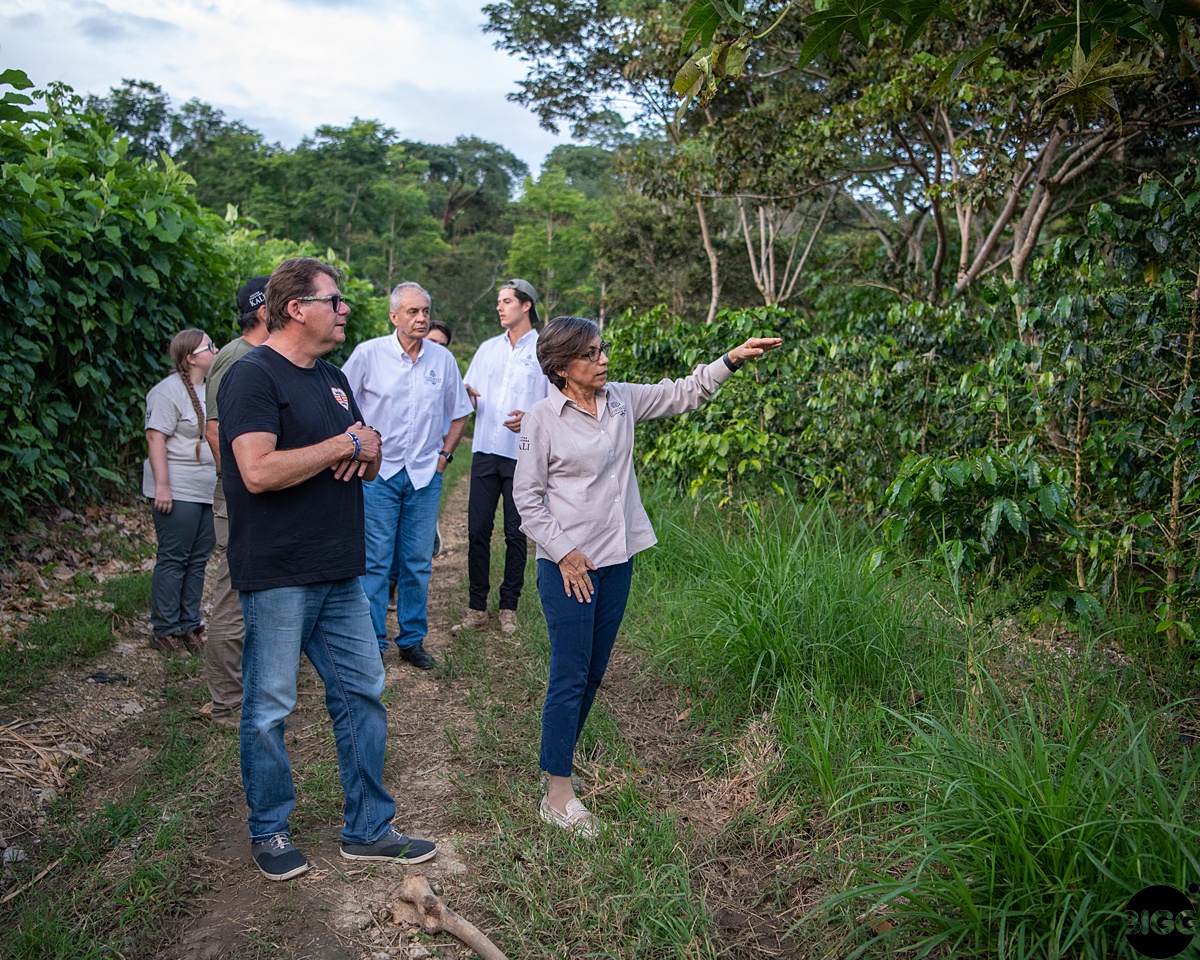
People, Planet, Community
So, we had one Farm-Direct partnership with Living Hope under our belt, albeit a small one. And we had mission to find more. Armed with what we had learned in Zambia, we set our criteria with a focus on People, Planet, and Community.
How that looks is different in every partnership we have made to date. And we learn something new every time.
Bob’s first visit to Finca La Fortaleza in August of 2022.
In Jinotega, Nicaragua, at the El Recreo Coffee Estate, the Ferrey family’s focus is generational change for their workers and their workers’ families through education, fair wages, and good housing. At Finca La Fortaleza, in Chiapas, Mexico, Maria Esther Saut and Pascual Castillo brought coffee back as a way for the small producers to thrive after the 2014 devastation of the rust epidemic. In Copan, Honduras, Al and Leticia Lopez at Finca Terrerito are investing heavily in the infrastructure of their surrounding communities, improving lives and opportunities for the people.
All three of them are farming coffee in a manner that goes way beyond “organic.” They are restoring the environment, reforesting, creating habitat for native species, and protecting their soil, their wildlife, and their water.
But, thanks to the vagaries of the C-Contract model, it’s like they were doing all of that while swimming uphill with one arm tied behind their backs. It was nearly impossible to build anything close to a sustainable economic pathway for their farms when they never knew how much money they would be able to get for their crops. In fact, El Recreo in Jinotega, Nicaragua, was very close to going under as a farm when we first met them.
That all changed with OBIIS, Farm-Direct, and BIGGBY COFFEE.
Boots on the Ground
Long before we get on an airplane, we spend a lot of time talking to our Farm-Direct prospects via Zoom and email. Those conversations are about values. We seek to find out if we are aligned. But nothing truly becomes real until we get to the farm.
We go, and we go. It might be three or four visits before we actually begin to figure out if and how a partnership might work.
Then, if we do become partners, we go and we go and we go again.
Funnily enough, we’re not actually there to evaluate the coffee. At least not during the first couple of visits. For us, it’s people first. And if we find people that are truly up to good things, only then do we consider their coffee. It’s not until the final step, after we’ve had a chance to figure out their economics, and how their coffee could fit in our world, that we figure out a price. The C-Contract is completely irrelevant to our process.
We stay on the farms, if it’s possible. And, we share meals with the families, the workers, and the community. We walk every inch of the fields. And we look at the worker housing. We spend time learning about their social goals. And we ask a lot of questions.
There are things you just can’t know unless you’ve been there.
Sometimes what we find on the ground rules out a partnership all together. I’ll give you an example. I’m not a coffee farmer, but I am a Master Gardner, and I know what it looks like when someone uses RoundUp in their fields. Beyond just killing the weeds, it does something to the soil. It looks cracked and dead. And the raft of hover flies, gnats, and other small insects that should be dancing between the rows of coffee disappear altogether. It’s also a human carcinogen, and the risk of it seeping into the water table is high. It’s a redline for us that we will not cross.
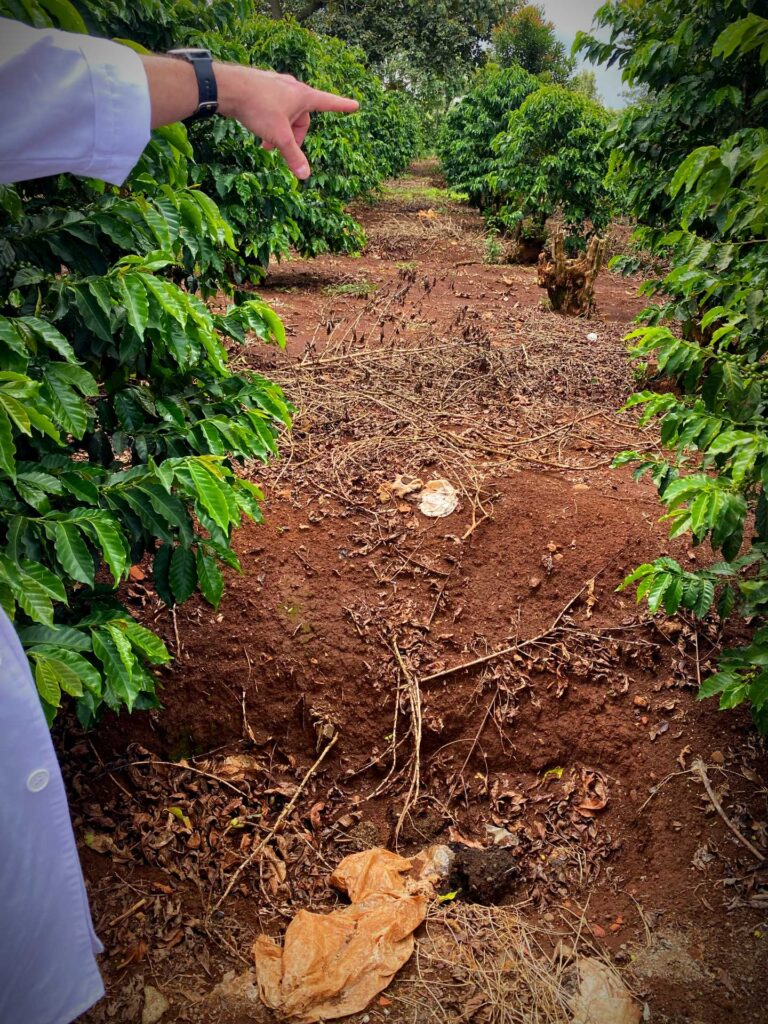
*No weeds in sight, and no bugs either on a coffee field in Kenya.
We were in Kenya, meeting with a farm that seemed like a perfect prospect on paper. And then, when we actually spent time with the people, we were even more impressed. We really liked them. It seemed like our values were aligned. If we had not gone to walk the fields, we might have bought their coffee. You can read about that story here.
Another example is what we found in Ethiopia. We were visiting a company that had a great brochure and website. They talked enthusiastically about improving conditions for small farmers, building schools, and generally improving communities. And then we went to visit the washing stations where the small farmers processed their cherries. And what we found was quite different.
Again, there are things you just can’t know unless you’ve been there. Some of those things make you want to shout from the rooftops about the good work happening in the world. And some of those things break your heart.
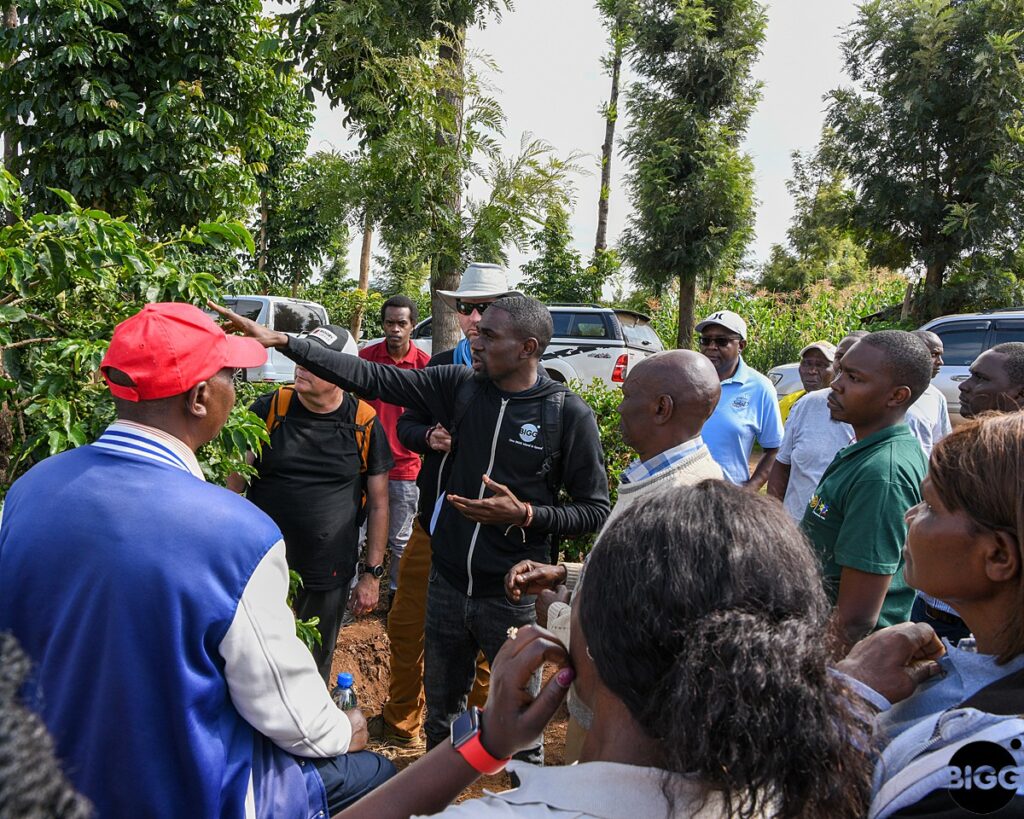
*Wana Chipoya (center) from Living Hope sharing his coffee knowledge with the small producers in Solai, Kenya.
Farmshare
One thing we do that nobody else does, to our knowledge, is bring one of our coffee producing partners with us when we visit a Farm-Direct prospect. And It’s powerful, both for us, and for the farm we’re visiting.
The advantages for us are obvious, I think. A knowledgeable coffee farmer that shares our values (aka our partner) can look at the operations of another coffee farm with a much deeper understanding than Bob and I can. Their understanding enhances our understanding, and it helps us make better decisions.
But for the coffee farmer we’re visiting, it’s also an incredible opportunity. Coffee farming is actually pretty isolating, particularly for some of the smaller farms that we visit. You don’t get out much, as the saying goes, because your farm needs you 365 days a year. And you don’t meet many people who are facing the same challenges that you are.
And then OBIIS shows up, almost like we’re from outer space, with another coffee farmer, most likely from a completely different part of the world. We’ve witnessed some truly amazing conversations and connections. The opportunity provided by the cross-pollination of ideas and knowledge of new agricultural practices is palpable.
While we were visiting a very promising prospect in Mozambique earlier this year, we brought our friend and partner Wana Chipoya, the producer at Living Hope in Zambia, along with us. When he met Julius, the head agronomist of the coffee project at Gorongosa National Park, the two of them fell down the best kind of rabbit hole of conversations. For three days, they talked nonstop about the challenges that each of them face on their own farms.
They were the same challenges! And Wana had solutions for some of the most intractable problems the farmers in Gorongosa were tackling. Plus, Wana came home with some new ideas and lots of inspiration. It was really exciting to behold.
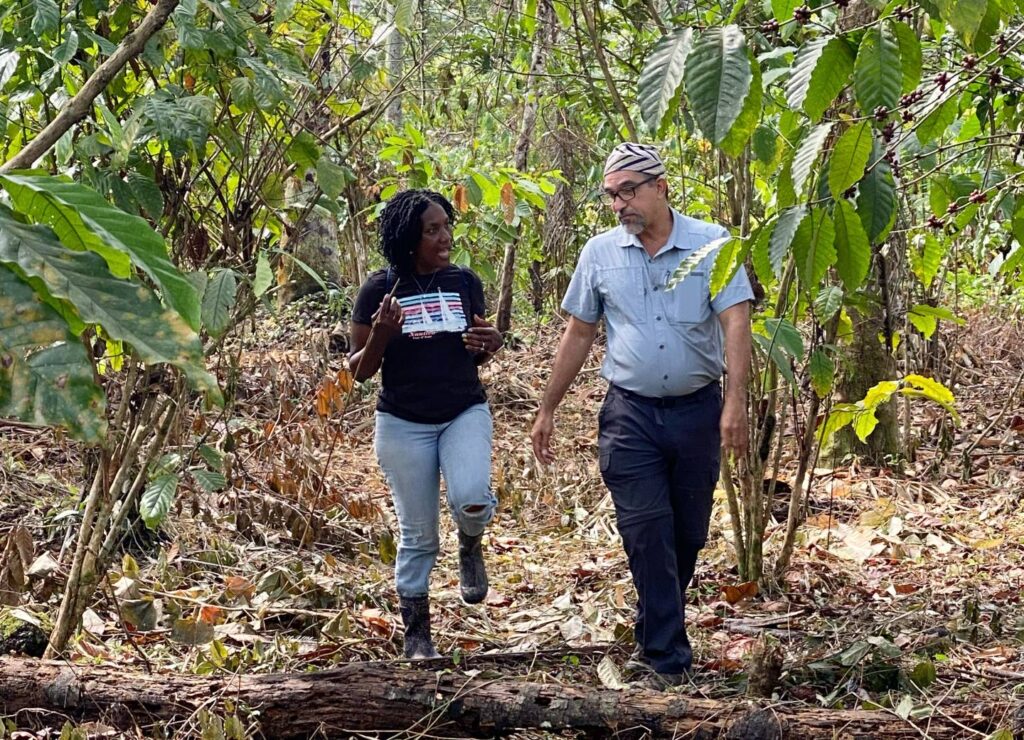
*Dr. Jorge Ferrey (right), walking a coffee field with Kadiatu Allie in Sierra Leone.
The same dynamic has happened with our friend and partner, Dr. Jorge Ferrey, from El Recreo in Nicaragua. He has walked fields with us in many countries. And he shared his knowledge and wisdom with dozens and dozens of small producers. It’s likely that we won’t do business with many of them. For whatever reason, they just aren’t a good fit, or they’re not ready for us. But for some, like Raquel Giron and her brother, Octavio at Finca Montefresco in Honduras, Jorge’s ongoing coaching could make all the difference.
Another component of Farmshare is something that we learned from BIGGBY COFFEE’S Franchisees. One of the hallmarks of a successful franchise company is how connected Franchisees are to each other. They learn from one another, they support one another, and they are all smarter and stronger together because of their interconnection.
Similarly, we are fostering that kind of environment among our Farm-Direct partners. We encourage them to visit each other’s farms, and spend time learning from one another, and supporting one another. That kind of sharing makes us all smarter and stronger.
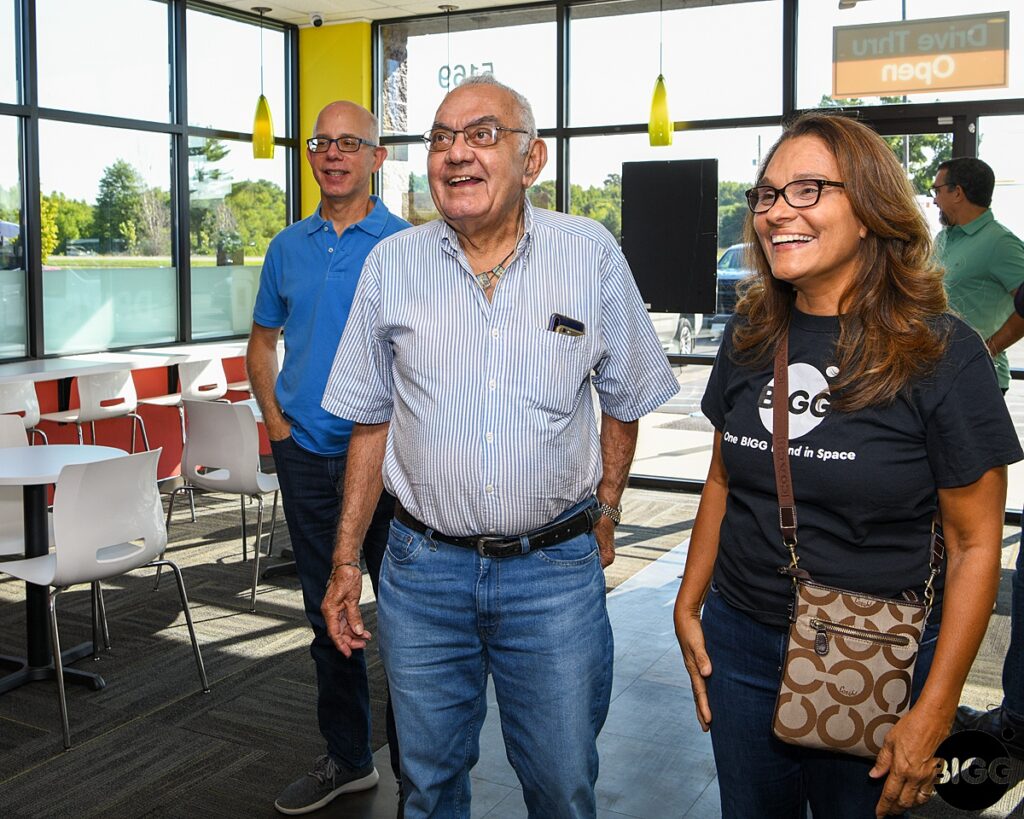
*Carlos Ferrey (center), our partner at the El Recreo Coffee Estate in Jinotega, Nicaragua, along with this daughter Miriam (right) and son-in-law Hector on his very first trip to a BIGGBY COFFEE in September, 2022.
Full Circle
Most coffee farmers have no idea where their coffee ends up. From the farm, it makes its way into the hands of an exporter in their country. But from there, who knows? They certainly would have no idea what the café that it’s served in looks like, or who the customers are that enjoy it by the cup.
As a part of our Farm-Direct program, we’re changing that. We bring our producers here. We use the occasion of the BIGGBY NATION SUMMIT, our annual gathering of all the Franchisees, many of their managers and baristas, and our home office staff. This year, that included about 1,000 people.
We take them to BIGGBY COFFEE cafés where they can see their coffee being served, and the joy that it brings the customer. The first time we did it, Carlos Ferrey cried when he saw the single-origin bag on the shelf, with his picture on it, from El Recreo in Nicaragua.
For the two days of the SUMMIT, our producer partners get to attend all the events and meet the people. They get to see and experience, firsthand, the amazing things that BIGGBY COFFEE Franchisees are doing in their communities and for their people. They get to know us in our environment in the same kind of real way that we’ve gotten to know them on their farms.
Then, during the OBIIS presentation, Bob and I bring them up on stage to introduce them to all of BIGGBY NATION. And they always get a standing ovation. They definitely deserve it.
It’s more than just a feel good moment, though. We want to illuminate the entire chain, from the farm to the cup. We’re partners with our producers, and we are partners with our Franchisees. The better both sides of the supply chain know each other, the better we can support each other in the work we’re all doing.
For the Franchisees, understanding how the coffee they’re serving is changing the world for the better is powerful. That is something they can enthusiastically share with their customers, and that sets BIGGBY COFFEE way ahead of its competitors. For the Producers, experiencing what it means to be a part of a company that seeks to change workplace culture in America by helping you build a life you love is equally powerful.
It’s the best kind of win.
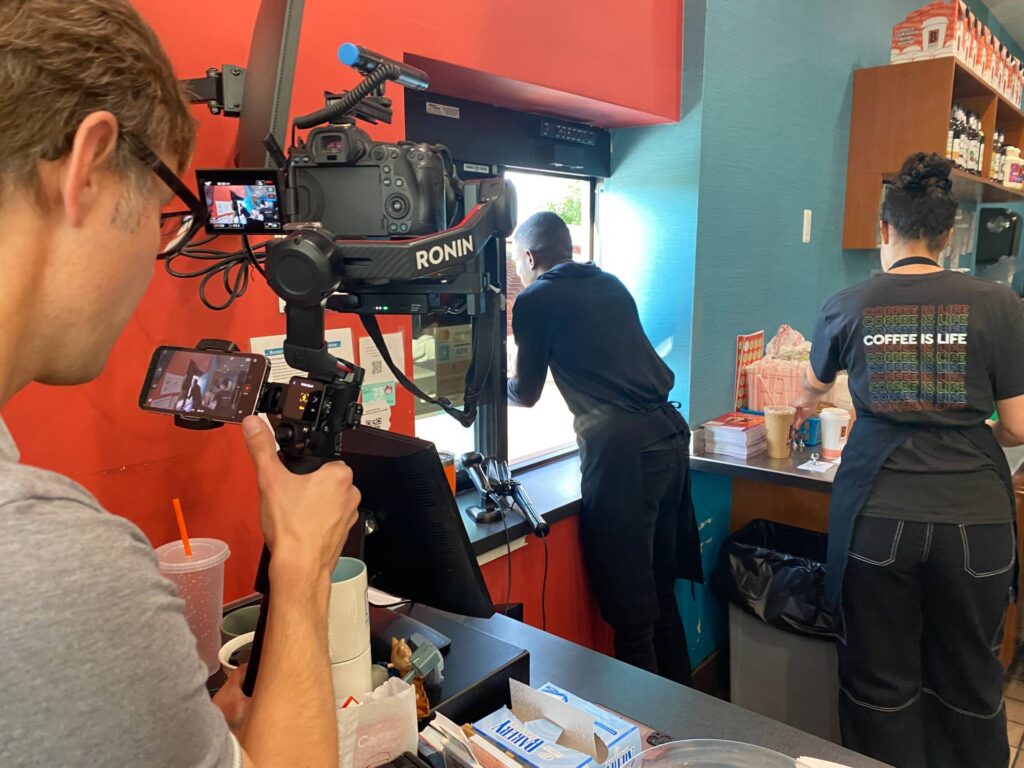
*Wana Chipoya, the Producer from Living Hope, working the drive through window in September, 2023. Talk about Farm to Cup!
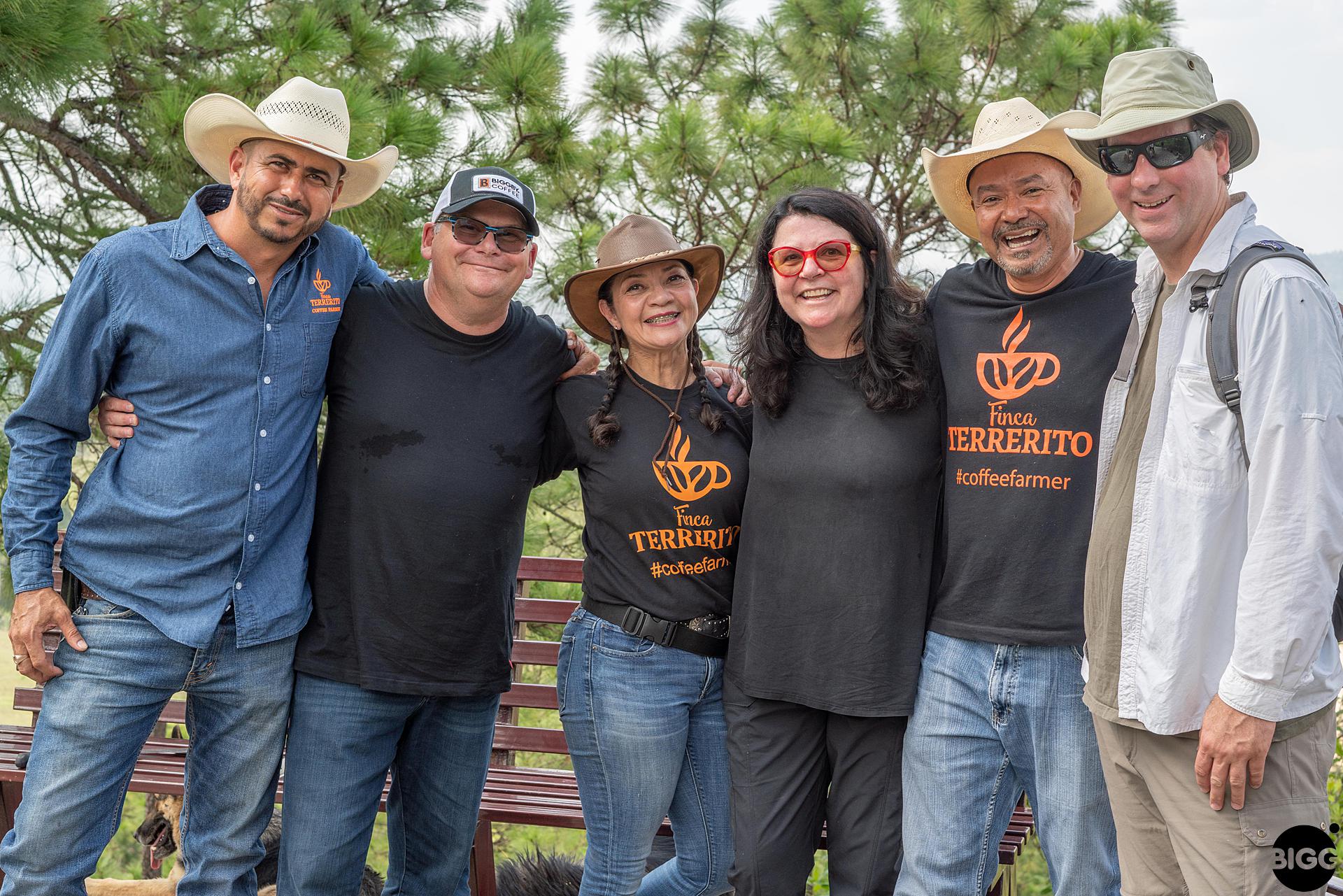
Name, Face, Place… But First, This
The coffee business, particularly on the consumer facing side, is where green washing and social washing got together and had a baby. And it is one ugly baby.
From L-R: Marcial Rivera, Bob, Leticia Lopez, Michelle, Al Lopez, and Rich Schaasfma at Finca Terrerito, our partner farm in Copan, Honduras.
It’s hard to find a retail coffee company’s website that doesn’t have a picture on it somewhere of a smiling black or brown coffee farmer, picking cherries. By implication, the company that posts the picture looks like they are up to good things for coffee farmers.
Or, they will tout some wonderful program they are engaged with in a coffee producing country. It will make them look like they are doing a lot. But they don’t tell you that it impacts less than 5% of their coffee purchases, and the rest of it they buy through brokers like everybody else does.
I’m calling bullshit. Bob uses even more colorful language. He calls it farm porn.
I’ll give you two examples. Actually, I could give you hundreds, but I’ll keep it to two.
I was having a conversation with a female coffee farmer from Burundi. She has family connections in the US and has been on a quest to find American coffee roasters who might buy her coffee at a good price. She was working a list, checking out roasters’ websites, when she came upon a picture of herself in her fields on the website of a company she had never heard of before. Never met. And that was definitely not buying her coffee.
Why was her picture on their website? It sure made it look like they support coffee farmers, particularly African women coffee farmers. And that sounds good. But it wasn’t true.
She contacted the company. It took her several months to finally get a human to talk to. They said they just found her picture on the internet and used it. And they would consider taking it down, but they weren’t interested in buying her coffee.
It takes a special mixture of hubris and ignorance to think you’re entitled to steal someone else’s life and likeness to make yourself look good. Welcome to the coffee business.
Next example… we know a coffee producer who is doing good things for his community. He had a friend in the US who started a small chain of coffee shops. So, when he had his first commercial crop ready for sale, he approached his friend who brought an enthusiastic team from their franchise company to the farm. They took lots of pictures. And they struck a deal to buy his coffee at a few cents above C-Contract.
The C-Contract price happened to be higher in that moment, so that worked out. The company went home and put up pictures of his farm in all of their cafés to celebrate their direct trade bonafides.
The next year, the C-Contract price dropped by about 20%. They offered to buy his coffee for a few cents above the C-Contract price. But at that, our friend would be losing money on his crop, and he told them that. They weren’t able to agree on a price, so they stopped doing business together.
But now, it is several years later, and the pictures of his farm still hang in all of their cafés.
That is farm porn. That is bullshit.
A Name, A Face, and a Place for Every Coffee We Serve
And that is the environment we’re in. No wonder so many consumers are cynical.
At the macro level, you could call it a generational thing. According to demographic research, Baby Boomers and GenXers tend not to question the “rightness” of the status quo. Or, if they do, it doesn’t take very much to assuage their sense of unease. A few pictures of coffee farmers in your cafes might do the trick. Or maybe buying coffee with labels on it like FAIR TRADE, ORGANIC, or RAINFOREST ALLIANCE can make them feel like they are part of the solution.
Of course, we know from firsthand experience that those labels don’t mean what the consumer thinks they do. You can read more about that here.
Millennials and Gen Z, though, tend to think a lot more about the provenance of the things they consume. And they are very concerned about climate change. They are also absolutely allergic to anything that even smells like green washing. And they will punish brands that they think are lying to them.
Our partners really are changing their communities and protecting the planet. And we are telling their stories through our blog posts and our videos.
Everything we do in OBIIS is dedicated to putting a name, a face, and a place on every coffee we serve. Our relationships with our partners are real. And we believe that fostering a deep connectivity between the producer and the consumer is vital to creating the change that the coffee industry needs to survive.
We are working on a series of documentaries about our partner farms and the amazing work they are doing for people, planet, and community. We are developing materials like the 2023 calendar that we just released with pictures of our partners, and links to stories about them, to make it easier for our Franchisees to get that information in the hands of their staffs and their consumers.
More than that, we are bringing BIGGBY NATION to the farms to see what’s happening for themselves through annual trips that are open to anyone. And, we go Full Circle, to bring our partners to BIGGBY COFFEE.
At the beginning of the story, I described myself as a blank slate when it comes to knowing where my coffee comes from. I think that’s true for most of our customers, regardless of their generation.
But I also think it’s true that you can’t unknow what you learn. And the more direct we can make the connection between the consumer and the producer, the better chance we have of changing the status quo. The consumer, after all, has the ultimate power of choice.
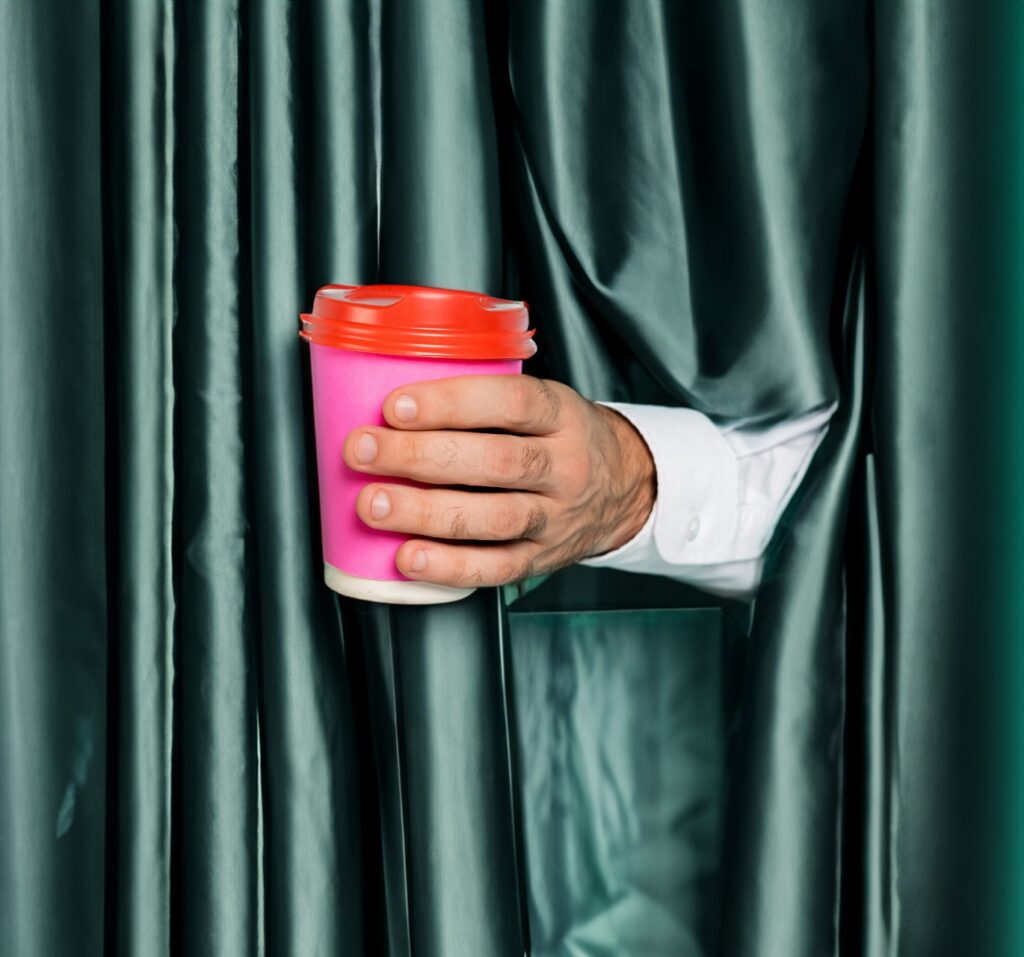
The Status Quo
One metaphor Bob and I often use to describe the coffee business is the black curtain. It’s this impenetrable veil between the producer and the end user. The curtain is the broker system, and all the machinations that coffee goes through to get it from the farm to US shores.
By the time coffee arrives on our doorstep, it has been stripped of its individuality and its history. By design, we as end users know nothing about the struggles and successes of the people who produced it. And we know nothing about the economic and environmental impacts that growing it has had on the farmer and on the planet. We just know it tastes good.
Coffee is a $200 billion a year industry. Only 10% of that stays in the country where it was grown. That’s 10 cents on the dollar, and the current system of coyotes and brokers takes the lion’s share. Very little is left over for the farmer.
90% of that $200 billion is generated on our side of the black curtain, in the consuming country.
Unlikely Protagonists
For the last 30 years, Bob has been deeply enmeshed in the details of how that 90% generates revenue. But neither he, nor anyone else in BIGGBY COFFEE, had ever given much thought to what is behind the curtain.
We didn’t know that the way we were buying coffee was almost certainly perpetuating poverty and worsening climate change. But once we knew, we couldn’t unknow it.
Funnily enough, our former lack of knowledge about what happens behind the curtain has actually been an asset as we set out to create change.
We didn’t know how things are “supposed” to be done. And that not knowing has been like a super power as we completely upend the system through Farm-Direct. We are not hamstrung by any preconceived notions. We don’t have to unlearn anything to make progress.
We were definitely naive. And it’s true that it takes a lot of time and effort to make the logistics work for each partnership. But not knowing how near-impossible it would be to accomplish Farm-Direct gave us the courage to try. And it turns out that it can be done in a way where everybody wins. We are getting better at it all the time.
Born in Michigan
The other thing that makes us unlikely protagonists in this journey is where we come from. Most change comes from the fringes, and works its way in. When people think of farm to cup experiences, they generally imagine fancy coffee shops in big cities where they serve $20 pour-overs and talk about tasting notes.
Their customers’ desire for unique coffees with high Q-Grade scores, and their willingness to pay top dollar by the cup, are what drive that part of the café industry to provide visibility into their farmer’s processes and terroir. It’s an important, albeit relatively small, part of the overall market.
We are from the Midwest, dab smack in the middle of the American consumer experience. We sell specialty brewed coffee made into beverages called things like “Caramel Marvel” and “Butter Bear.” Our customers want something delicious, fast, and served with enthusiasm through the drive through window.
We are where the majority of American consumers are. And if we can change the math here, by creating a sense of connection to people doing amazing things halfway around the world, just think of the impact we can have.
As of this writing, we are 35% of the way towards our goal, purchasing approximately 771,000 lbs of coffee in 2023 through our three Farm-Direct partnerships. BIGGBY COFFEE has 370 units open, and buys approximately 2.2 million pounds a year of coffee a year.
By mid-2024, our fourth partnership with Al and Leticia Lopez at Finca Terrerito will come on line, and bring us up to north of 50%.
BIGGBY COFFEE is on track to become a 1,000 unit chain by 2028, at which time it will be buying somewhere in the neighborhood of 5 million pounds of coffee a year.
The scale of BIGGBY COFFEE’s growth is going to provide the opportunity for positive change all around the world, one cup at a time. Bob and I can’t wait to get back out there. We’ve got a lot of BIGG work to do.
